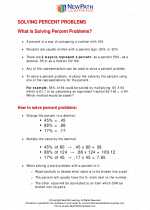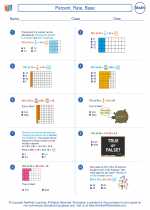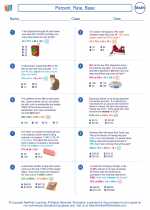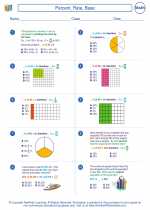Percent, Rate, Base -> percent
Understanding Percent
Percent is a way of expressing a number as a fraction of 100. The word "percent" comes from the Latin per centum, meaning "by the hundred". It is denoted by the symbol "%". Percentages are used in many real-life situations, such as calculating discounts, expressing proportions, and comparing quantities.
Converting Between Percent, Fraction, and Decimal
To convert a percent to a fraction, we simply write the percent as a fraction with a denominator of 100. For example, 25% is equivalent to 25/100, which simplifies to 1/4.
To convert a percent to a decimal, we divide the percent by 100. For example, 50% is equivalent to 0.50 as a decimal.
To convert a fraction to a percent, we multiply the fraction by 100. For example, 3/4 is equivalent to 75% when expressed as a percent.
Calculating Percentages
To calculate a percentage of a number, we can use the formula:
Percentage = (Part/Whole) * 100
For example, if we want to find 20% of 80, we use the formula:
Percentage = (20/100) * 80 = 0.20 * 80 = 16
Applications of Percent
Percentages are used in various real-life scenarios, such as calculating sales tax, finding discounts, determining interest rates, and expressing probabilities. Understanding percentages is crucial for making informed decisions in finance, business, and everyday life.
Study Guide
- Understand the concept of percent as a fraction of 100.
- Be able to convert between percents, fractions, and decimals.
- Practice calculating percentages using the formula (Part/Whole) * 100.
- Apply percentages to real-life situations, such as calculating sales tax, discounts, and interest rates.
- Review and practice with word problems involving percentages.
Remember to practice regularly and seek help if you encounter difficulties with any concepts related to percentages. Good luck with your studies!
[Percent] Related Worksheets and Study Guides:
.◂Math Worksheets and Study Guides Sixth Grade. Percent, Rate, Base

 Worksheet/Answer key
Worksheet/Answer key
 Worksheet/Answer key
Worksheet/Answer key
 Worksheet/Answer key
Worksheet/Answer key
